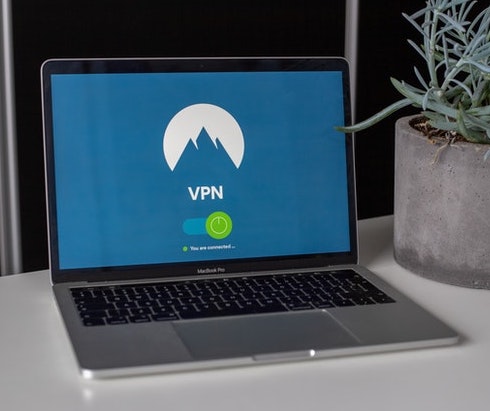How to Reduce the Risks of a Data Security Breach While Remote Working Back

The last 18 months or so, due to the COVID-19 pandemic, has not only changed employers’ and employees’ relationship with work – it’s signalled what may become the new norm.
Despite the fact that more and more companies are allowing their employees to migrate back to the office, staff have become accustomed to the remote working routine and found the benefits to the flexibility that allows for a better work/life balance.
For continued remote working to be an effective and long-lasting change for companies they and their employees need to make sure that home cybersecurity is taken seriously. Working from home leaves people without the safety net of an on-site IT team that can quickly solve issues that spring up and reduce risks that the rest of the office isn’t even aware of.
If you’re asking, how do I keep my data secure? – you don’t need a degree in cybersecurity to reduce the risk of a data security breach when working from home. If cybersecurity best practices are established and followed, data security and protection can be easily increased for everyone working remotely.
Below are just some of the steps that can be taken to boost data security whilst remote working.
Keeping Work Separate
With remote working, it’s easy to slip into the habit of allowing the barriers between home life and work to break down. When it comes to protecting work devices – the barrier should always remain up.
Using a once personal device for work purposes opens yourself up to security issues. There is a greater chance that family members (including young children) and friends may use these devices and not be as tech-savvy or careful as you. This unintentional negligence can leave your devices open to cyberattacks and put sensitive work data at risk.
Having devices just for work stops this crossover with usage and data. An added bonus is that these devices can be locked and hidden away to reduce the risk of physical theft.
Keeping Passwords Secure
One of the simplest and obvious solutions to protecting work devices is maintaining vigilance when it comes to passwords. Creating strong unique passwords that aren’t repeated is the most effective way that you personally can reduce the risk of a data security breach from one of your devices.
There are programs available like password manager tools that will do the work in creating complicated passwords for all your login requirements and store them safely.
Using a VPN
With more emphasis being put on cybersecurity and privacy online the use of VPNs has been on the rise. Despite this, a lot of people still don’t make use of them – and you may be one of them, sitting there asking, what is a VPN?
VPN stands for Virtual Private Network. It essentially provides a secure tunnel between two locations (which in this case would be a work device at home and the office). A VPN encrypts the data being trafficked between these points so no hacker or scammer can read it.
For the best cybersecurity, companies should invest in using VPN for all their employees’ work devices. With VPN companies can control who has access to what data as not every person needs to access the same data all the time.
Cybersecurity can be further increased by using access restrictions with login and password requirements. This can go even further with methods such as multifactor authentication – for example requiring a code on top of the login password that is sent to your phone.

Secure Virtual Meetings
The rise in working from home has meant the inevitable rise in virtual meetings over software such as Zoom. With this increased use it has also brought increased risk, such as the publicised “Zoom Bombing” – where people are able to access meetings and cause havoc.
Doing things such as adding passwords to the meetings, controlling entry access with the waiting room feature and keeping the software updated are simple things that greatly reduce the risk of security breaches.
Email Security
Communication via email is essential for staying connected to colleagues if you are working from home. Cybercriminals are aware of this – making email one of the more common ways that gaps in security are exploited.
You can purchase (for yourself or your staff) anti-spam software to stop malicious content from even being sent. Combining this with other measures like email encryption, which disguises the content of emails when in transit, reduces the chance of sensitive data being discovered and stolen.
A handy step for an employer to take is to provide cybersecurity awareness training for everyone to ensure vigilance. If people are suspicious by default, then you or anyone else will not be easily convinced by possible phishing emails and malicious email attachments.

Secure Data Storage
If the majority of a company continues to work from home, they will need to look at alternative data storage solutions. As everyone is not on-site anymore, a good way to get around this is to have a more centralised storage solution on the cloud that can be remotely accessed.
Services that provide cloud storage solutions put a premium on security and their standing in the industry is based on how safe their clients’ data is. These service providers ensure data back-up, utilise built-in firewalls and are consistently updating and innovating to ensure their security measures are robust.
Sometimes the safest hands aren’t always your own.
Home Wi-Fi Security
Strengthening the security of your home Wi-Fi is an important step you alone can take. Creating a strong password for your router and changing the name of the router so hackers can’t as easily identify it is easy to do and an effective way to reduce the risk of data security breaches.
You can make sure your network is protected by applying network encryption. This is available already and can be accessed through the settings on your wi-fi network page on your browser. There are a number of options including WEP, WPA and WPA2 – the last one being the strongest.
For the most effective cybersecurity, these methods and many others need to be combined to decrease the risk of data breaches and being a victim of cybercrime.
Before expanding your or your company’s remote working plans you need to make sure best practices are in place, understood and followed by everyone.


 Based in Liverpool and Wirral, we provide document storage, scanning and shredding services nationwide.
Based in Liverpool and Wirral, we provide document storage, scanning and shredding services nationwide.

